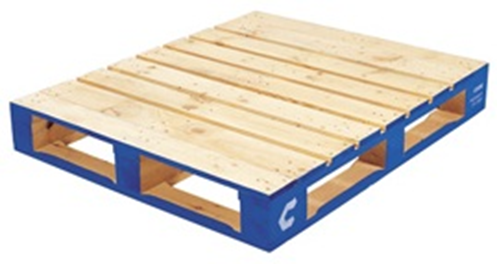Is it normal for pallet beams to bend when loaded?
- Keith D Goodfellow (SARI)

- Jan 15, 2021
- 2 min read
Updated: Mar 13, 2023
Yes, it’s perfectly normal for a beam to bend under normal loading conditions especially when under full load but excessive deflection needs investigation. Beams will deflect naturally under normal loading conditions up to a maximum deflection of the span/200. In other words the length of the beam in ‘mm’ divided by 200 gives the maximum deflection or bend allowable for a beam in ‘mm’. This deflection should almost disappear once the beams are offloaded and should not be confused with permanent deformation caused by overloading or impact damage. If the beam is bending by more then this then offload immediately, check the load on the beam and ensure that the beam has returned to a straight condition. Normally this excess deflection it is simply caused by overloading. If the beam is still showing any visible bend then it has been permanently damaged and should be scrapped and replaced. Whilst in fairness a small residual bend is allowable it's so slight as to be almost imperceptible so when a residual bend can be seen it’s likely to be beyond what’s allowable. If in any doubt consult an expert. An alternative cause of lateral beam deformation can be due to pushing or dragging pallets across beams and can be more evident to rear beams where a pallet is shunted into the rack. The golden rule here is never drag or shunt pallets. Also check the condition of the beam connector and weld for any signs of damage, bucking, or cracks.
How to measure beam deflection: The easiest way to measure beam deflection is to tie a piece of string across the frame immediately under the beam so it is touching the underside of the beam at either end and pull it taut. A couple of strong magnets or frame clamps are ideal for this. Then measure the deflection where the gap is greatest. Job done! See the table below for deflections on typical beam lengths.
· Residual vertical deformation when the beam is unloaded should not exceed span/1000 of the normal deflection under working load
· Lateral deflection should not exceed 40% of the normal vertical deflection under working load
· Residual lateral deformation when the beam is unloaded should not exceed span/500
· Beam end connectors which show any clearly visible deformation should be unloaded and expert advice sought from the equipment supplier
· Welded connections between the beam section and the beam end connector should show no signs of cracking
· Physical alterations to beams are not permitted
· Where any damage is noted seek immediate advice and if in doubt, offload immediately
· Beams are designed for a UDL (uniform distributed load) and uneven or point loading should be avoided
· When offloaded the bending should disappear, if not DO NOT RELOAD.

Beam deflection table:
Beam length (mm) Max allowable deflection(mm)
1,350 6.75
2,700 13.5
3,300 16.5




Comments